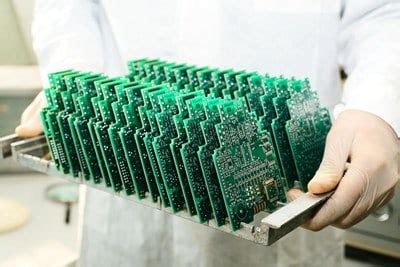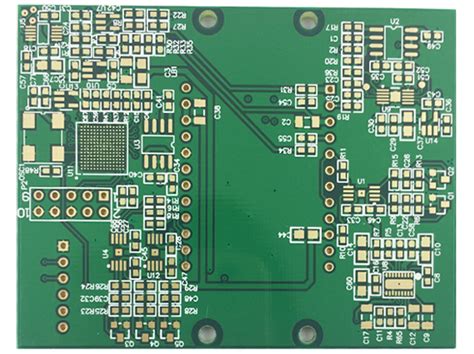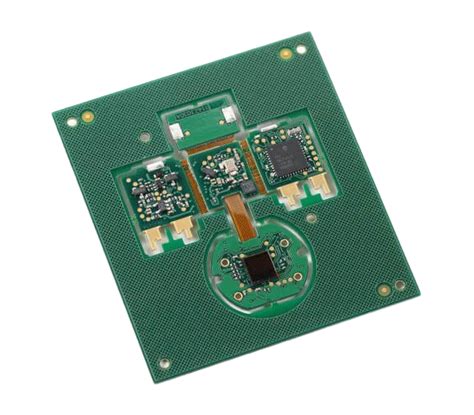Revolutionizing Electronics: The Future of Automated PCB Manufacturing
Key Takeaways
The landscape of automated PCB manufacturing is rapidly evolving, marking a significant transformation in the electronics industry. One of the foremost developments is the integration of advanced robotics and artificial intelligence into the PCB assembly process. These technologies not only facilitate higher precision in manufacturing but also ensure that production methods are carried out with remarkable efficiency. As industries strive for greater automation, PCBA operations benefit from streamlined workflows that greatly reduce human error and enhance overall quality. Moreover, automation plays a crucial role in minimizing production costs and significantly improving turnaround times, allowing manufacturers to meet rising demand without compromising on stringent quality standards. The implications extend beyond operational efficiencies; automated processes also pave the way for greater design flexibility, making it easier for engineers to innovate in design and functionality. Another crucial aspect is sustainability; as companies adopt automated solutions, they often find opportunities to optimize resource usage and reduce waste. This focus on sustainability reflects a growing awareness within the industry about the need to balance production with environmental responsibility, ultimately shaping a more sustainable future for PCB manufacturing as a whole.
Introduction to Automated PCB Manufacturing
The advent of automated PCB manufacturing represents a significant leap for the electronics industry, dramatically altering how printed circuit boards (PCBs) are produced. This process integrates advanced technologies that streamline every phase of pcb assembly, ensuring that the intricate designs of modern electronics can be realized with enhanced accuracy. Automation not only speeds up production but also improves consistency, making it easier to achieve rigorous standards in pcba quality. With the growing complexity of electronic devices, manufacturers are turning towards automated solutions to handle large volumes without compromising on quality. As we examine the future landscape, it’s clear that automation is not just a trend but a necessary evolution, allowing for faster turnaround times and more cost-effective solutions. Furthermore, automated processes can adapt more readily to changes in design specifications, thus offering increased flexibility in production. The shift towards automation signifies a pivotal change, marking a new era in PCB manufacturing where efficiency meets precision.
Key Technologies Driving Automation in PCB Production
The landscape of automated PCB manufacturing is significantly enhanced by several key technologies that are reshaping the industry. Central to this transformation is the advancement of robotic automation. These robots perform repetitive tasks such as pcb assembly with unparalleled speed and accuracy, minimizing the risks of human error, and ensuring consistent quality across production runs.
Additionally, the integration of Artificial Intelligence (AI) plays a crucial role in optimizing production processes. AI algorithms analyze performance data in real time, allowing for predictive maintenance and timely interventions that prevent downtime. This leads to an impressive increase in efficiency and a reduction in operational costs, making pcba manufacturing more profitable for companies.
Moreover, advancements in 3D printing technology have opened new avenues for rapid prototyping and customized production runs. This not only enhances design flexibility but also facilitates the creation of complex geometries that were previously unachievable using traditional manufacturing methods. The ability to quickly iterate on designs helps companies respond swiftly to market changes and consumer demands.
Furthermore, the use of smart factory systems, which incorporate Internet of Things (IoT) devices, allows for real-time monitoring of equipment and workflows. These systems collect data from machines throughout the production line, leading to improved transparency and more informed decision-making processes.
“Embracing these technologies not only streamlines operations but also lays the groundwork for innovations that push the boundaries of what’s possible in electronics.”
As industries continue to implement these modern solutions, we can expect sustained improvements in both efficiency and quality within automated PCB manufacturing processes. The interplay between these technologies promises to redefine what is achievable in this pivotal sector that underpins modern electronics.
Enhancing Precision and Efficiency in PCB Manufacturing
The shift towards automated PCB manufacturing has brought about significant improvements in both precision and efficiency, two critical factors in the production of printed circuit boards (PCBs). By implementing advanced robotics and machine learning algorithms, manufacturers can achieve unparalleled accuracy in the pcb assembly process, ensuring that components are placed with exacting standards. This level of precision reduces defects, minimizes waste, and enhances the overall quality of the final product. Additionally, automation streamlines workflows by reducing manual intervention, which not only expedites production but also allows for more consistent output during pcba processes. The integration of real-time monitoring systems further enhances efficiency, as these systems provide instant feedback and data analytics, enabling quick adjustments to manufacturing parameters when needed. Consequently, manufacturers can better manage production schedules, respond promptly to market demands, and ultimately reduce time-to-market for new electronic products. As automation continues to evolve within the sector, these advancements signify a promising future for enhanced operational performance and competitiveness in PCB manufacturing.
Cost Reduction and Improved Turnaround Times through Automation
The shift towards automated PCB manufacturing has led to significant cost reductions and improved turnaround times, factors that are crucial for competitiveness in the electronics sector. Unlike traditional methods, which often involve extensive manual labor and lengthy production cycles, automation streamlines the pcba process, allowing for a faster and more efficient workflow. By incorporating advanced technologies such as robotics and machine learning, manufacturers can minimize human error, thus ensuring higher precision in each step of the PCB assembly. This enhancement not only brings down production costs by reducing labor expenses but also drastically shortens the time from design to delivery. As a result, companies can respond swiftly to market demands and new product opportunities without sacrificing quality. Furthermore, with automation handling routine tasks, engineers can focus on more complex challenges, leading to innovation within the industry. The integration of such automated processes creates a synergistic effect that not only improves operational efficiency but also positions companies for sustainable growth in an increasingly competitive landscape.
Quality Standards in Automating PCB Processes
As the field of automated PCB manufacturing continues to advance, maintaining rigorous quality standards becomes paramount. The integration of automation in PCB assembly processes enhances not only efficiency but also precision, allowing manufacturers to achieve exceptional levels of consistency. To manage the complexities introduced by automation, the development and adherence to precise quality metrics are essential. These metrics often encompass a wide range of factors, including material integrity, solder joint quality, and overall product functionality. The implementation of automated optical inspection (AOI) systems is one such innovation that ensures each board is evaluated against predetermined specifications. Such technologies facilitate real-time feedback during production, enabling immediate corrective actions if deviations occur.
Moreover, adhering to international quality standards such as ISO and IPC norms plays a crucial role in automating PCBA processes. These guidelines help ensure that products not only meet consumer expectations but also comply with industry regulations, thus fostering greater trust among manufacturers and consumers alike. Consistency achieved through automation can lead to lower defect rates and reduced rework costs, ultimately contributing to a more sustainable production model. In this evolving landscape, ensuring that quality remains at the forefront of automated manufacturing will be essential for sustaining competitive advantage while meeting the ever-increasing demands for innovative electronic devices.
Implications for Design Flexibility in Electronics Manufacturing
The shift towards automated PCB manufacturing has profound implications for design flexibility in electronics production. With advancements in pcb assembly processes, manufacturers can now easily accommodate various design specifications without sacrificing efficiency. Automation enables the production of complex, high-density printed circuit boards (PCBs) that can support an array of functionalities. This capability is particularly crucial as consumer demands evolve and products increasingly require tailored solutions. The integration of pcba techniques enhances the adaptability of PCB designs, allowing for rapid adjustments and iterations during the development phase. Furthermore, as automation minimizes manual intervention, it allows designers to explore innovative layouts and components without the risk of errors that are often associated with traditional methods. This flexibility not only streamlines production but also encourages a culture of creativity within the engineering teams, paving the way for next-generation electronic devices that are both efficient and responsive to market needs. Ultimately, automation in PCB manufacturing heralds a new era where design freedom is limited only by imagination rather than manufacturing constraints.
Sustainability in the Future of PCB Production
As the electronics industry continues to evolve, sustainability has emerged as a critical focus in the realm of automated PCB manufacturing. The shift towards eco-friendly practices is gaining momentum, driven by both regulatory pressures and consumer demand for greener products. Innovations in the pcb assembly process are paving the way for increased efficiency and reduced waste, which are essential components of a sustainable manufacturing strategy. Companies are now exploring materials that are less harmful to the environment, such as lead-free solders and recyclable substrates that contribute to a greener supply chain.
Moreover, by implementing advanced automated systems, manufacturers can optimize production lines to minimize energy consumption and reduce the carbon footprint associated with pcba processes. This not only enhances operational efficiency but also aligns with broader corporate social responsibility goals. As industries adopt these sustainable practices, they will not only benefit from cost savings associated with reduced material waste but also improve their market competitiveness.
Integrating sustainability into automated pcb production means rethinking designs and manufacturing processes to ensure that every element of production supports both performance and environmental conservation. Ultimately, these innovations not only foster a more responsible approach to electronics but also underscore a commitment to future generations by promoting a balance between technological advancement and environmental stewardship.
Conclusion: The Evolution and Future of Automated PCB Manufacturing
The journey of automated PCB manufacturing has been nothing short of transformative, ushering in a new era for the electronics industry. As the demand for pcb assembly rises in various sectors—ranging from telecommunications to automotive—automation stands at the forefront of addressing these needs. The integration of advanced technologies, such as artificial intelligence and machine learning, into pcba processes is revolutionizing how manufacturers approach production. This evolution not only streamlines operations but also enhances precision in the creation of printed circuit boards. Furthermore, with the capability to adapt to shifting market demands, automation bolsters design flexibility, enabling engineers to innovate rapidly without compromising on quality.
As we look toward the future, it is evident that sustaining high-quality standards will remain a top priority amid growing production requirements. Automated solutions are designed to maintain stringent quality checks throughout the manufacturing process, thereby reducing errors that often lead to costly reworks. Ultimately, embracing automation does not signify a loss in craftsmanship; rather, it exemplifies how technology can complement human expertise. The implications for sustainability are also noteworthy; by optimizing resource usage and minimizing waste through precision engineering, automated PCB manufacturing contributes to a greener footprint in electronics production.
In summary, the evolution and future of automated PCB manufacturing signify a pivotal shift in how electronic components are produced. As industries continue to adopt these sophisticated methodologies, we stand on the brink of unprecedented advancements that promise to reshape the technology landscape for years to come.
Conclusion: The Evolution and Future of Automated PCB Manufacturing
The journey of automated PCB manufacturing has ushered in a new era for the electronics industry, characterized by rapid advancements and innovative processes. As we reflect on the evolution of pcb assembly methods, it is evident that automation is not merely a trend but a transformative force that shapes how printed circuit boards are produced. With the integration of advanced robotics and intelligent systems, companies can achieve unparalleled precision in pcba production, ensuring each component is meticulously placed. Furthermore, the efficiencies gained through automation translate into significant cost reductions and enhanced turnaround times, allowing manufacturers to meet the ever-growing demand for electronics swiftly. The emphasis on adhering to stringent quality standards cannot be overstated; through automation, businesses are consistently achieving higher levels of reliability in their products. Looking forward, the implications for design flexibility are substantial; enhanced communication between design software and automated systems enables greater adaptability in product development. This adaptability not only streamlines production processes but also supports sustainability efforts within the industry. As we embrace these advancements, it becomes clear that the future of automated PCB manufacturing is promising, with continued innovation at its core and a commitment to shaping modern technology more sustainably and efficiently.
FAQs
As the landscape of automated PCB manufacturing evolves, a few common questions arise regarding the PCBA (Printed Circuit Board Assembly) process. Firstly, many wonder how automation impacts the quality of pcb assembly. The answer lies in the enhanced precision that advanced machinery brings to the assembly process. Automation introduces systems that minimize human error, ensuring that each component is placed accurately and consistently. Additionally, with the implementation of automated optical inspection (AOI), defects can be detected in real-time, leading to higher quality outputs.
Another frequent inquiry revolves around the cost implications of adopting automated systems for pcb assembly. While initial investments in sophisticated equipment may seem high, businesses often find substantial savings over time through reduced labor costs and increased production speeds. Not only does automation lead to lower operational costs, but it also improves turnaround times significantly. As manufacturers scale their production without compromising on quality, they find themselves better positioned to meet growing market demands.
Lastly, many manufacturers seek clarification on how automation influences design flexibility in electronic components. With state-of-the-art software and machinery capable of handling various designs effortlessly, companies can implement rapid prototyping and make modifications swiftly, ensuring they stay ahead of consumer trends. This adaptability preserves a competitive edge while advancing sustainability efforts through more efficient material use and reduced waste.
For those looking to explore the potential of automated pcba, opportunities abound in this transformative sector powered by technology.
Discover More About PCB Assembly
For a deeper dive into the world of automated PCB assembly and its benefits for your business needs, please click here to learn more about how these advancements can optimize your manufacturing processes.







